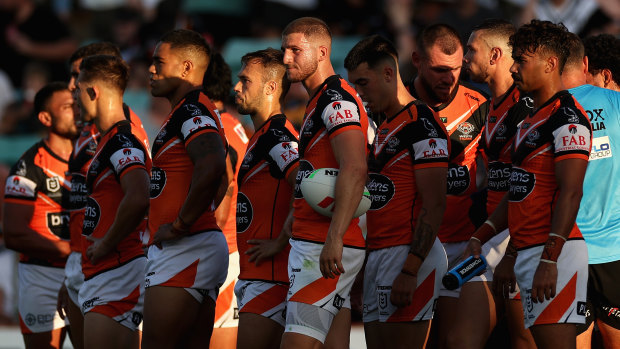This was published 1 year ago
Is $120,000 enough for the NRL’s lowest paid players?
A dispute over what the lowest earning NRL players should be paid when they fund their own health insurance is threatening to drag the collective bargaining agreement talks into a sixth month after the last pay deal expired.
Despite the NRL’s pre-Christmas announcement about an in principle agreement over the salary cap for the next five years, head office and the players’ union are still at odds over the final figure for minimum wage players.
According to sources speaking on the condition of anonymity given the confidential nature of the talks, tension has emerged over whether the base rate for a top 30 player should be set higher than $120,000.
The NRL announced $120,000 would be the lowest wage a club could pay a player in their top-tier roster, a significant increase on the last cycle. Previously, a club could contract up to four players in their top 30 on $80,000 per year.
But the Rugby League Players’ Association has asked for the minimum wage to be set at $130,000 after tabling a proposal to the NRL where individual players will take out their own health insurance.
The players’ union is concerned other top 30 players who were on a salary of, for example, $120,000 will be going backwards in real terms given their need to take out health insurance, which was previously the responsibility of clubs.

The NRL and players’ union are still at odds over what the minimum wage salary should be in the next pay deal.Credit: Getty
The cap for top 30 players this year is set to increase to $11.45 million, a 22 per cent increase on last year. But how the lowest paid athletes are treated is still causing angst at the negotiating table.
On top of the minimum wage imbroglio, the NRL and RLPA are trying to sign off further details on intellectual property rights and outperformance clauses when the game performs financially better than forecast.
But the contracting system still remains a major hurdle, specifically how and when players can move between clubs.
The NRL wants to restrict players from signing for rival clubs until June 30 in the final year of their contract – eight months later than the current November 1 model – a proposal opposed by the game’s leading stars.
The parties are exploring a stronger set of anti-tampering deadlines anticipating a change to the transfer system. The issue was discussed in a meeting of NRL, RLPA and club representatives earlier this week.
Club bosses have lobbied the NRL and RLPA to finalise a new transfer model before signing off on the new pay deal, rather than agreeing to revisit it at a later date.
The stand-off over several collective bargaining agreement issues resulted in players continuing to skip NRL-led promotional events such as the launch of multicultural round at Belmore earlier this week. NRL chief executive Andrew Abdo spearheaded the event.
NRL players had threatened to take further industrial action during the inaugural pre-season challenge, discussing the idea of delaying kick-off times, covering NRL logos on jerseys and refusing to do all external media requests given their frustration with the talks.
Stream the NRL Premiership 2023 live and free on 9Now.
Sports news, results and expert commentary. Sign up for our Sport newsletter.